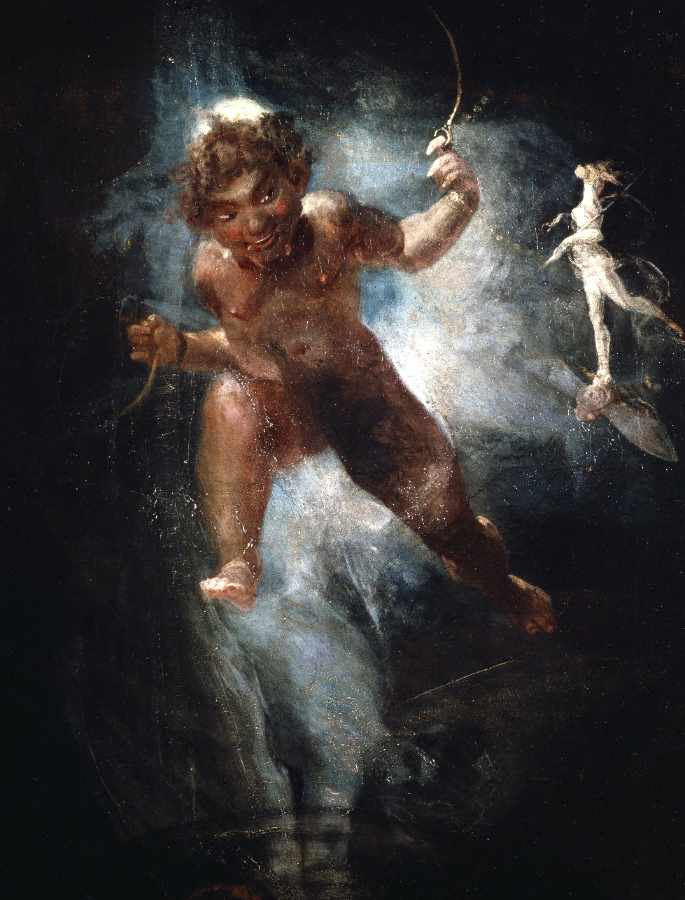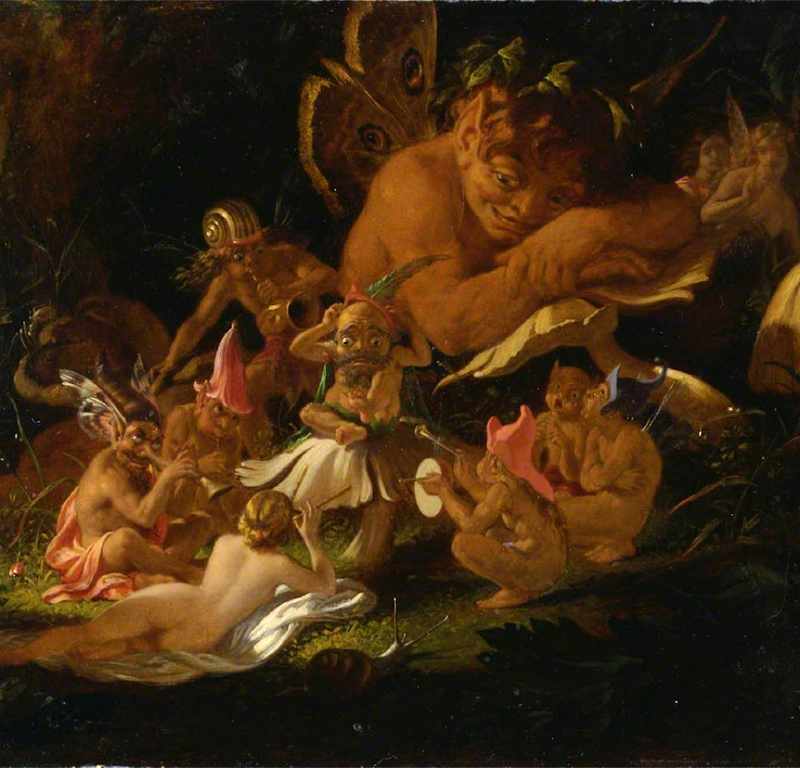In English folklore, Puck, sometimes known as Robin Goodfellow, is a domestic and nature sprite, demon, or fairy. According to Brewer’s Dictionary of Phrase and Fable (1898), “[Robin Goodfellow is a] ‘drudging fiend’, and merry domestic fairy, famous for mischievous pranks and practical jokes. At night-time he will sometimes do little services for the family over which he presides. The Scots call this domestic spirit a brownie; the Germans, Kobold or Knecht Ruprecht. Scandinavians called it Nissë God-dreng. Puck, the jester of Fairy-court, is the same. Puck might do minor housework, quick fine needlework or butter-churning, which could be undone in a moment by his knavish tricks if displeased. A domestic spirit, he would assist housewives with their chores, in expectation of an offering of white bread and milk. If this were neglected he would steal that which he believed was owed. Pucks are also known to be inherently solitary creatures. Shakespeare’s characterization of “shrewd and knavish” Puck in A Midsummer Night’s Dream may have revived flagging interest in Puck.
| Alias Puck |
| Real Names/Alt Names Puck, Robin Goodfellow, Hobgoblin |
| Characteristics Trickster, Film Characters, Literary Characters, Myths & Legends, Demon, Magic Caster, Prehuman Epoch |
| Creators/Key Contributors William Shakespeare, Unknown |
| First Appearance English folklore |
| First Publisher Edward Blount and William and Isaac Jaggard |
| Appearance List Literature: “A Midsummer Night’s Dream” (1595/96) in Mr. William Shakespeare’s Comedies, Histories, & Tragedies aka the First Folio (1623), Grim the Collier of Croydon (1660), Robin Goodfellow (play, 1 January 1604), The Mad Merry Pranks of Robin Goodfellow (early 17th century broadside ballad), Love Restored (1612), John Milton’s L’Allegro (1645), The Mad Pranks of Robin Goodfellow by John Franklin (1845), Rudyard Kipling’s Puck of Pook’s Hill (1906) and Rewards and Fairies (1910), Dear Brutus by J. M. Barrie (1917). Film: A Midsummer Night’s Dream (1935). |
| Sample Read A Midsummer Night’s Dream [PG] |
| Description In English folklore, Puck, sometimes known as Robin Goodfellow, is a domestic and nature sprite, demon, or fairy. According to Brewer’s Dictionary of Phrase and Fable (1898), “[Robin Goodfellow is a] ‘drudging fiend’, and merry domestic fairy, famous for mischievous pranks and practical jokes. At night-time he will sometimes do little services for the family over which he presides. The Scots call this domestic spirit a brownie; the Germans, Kobold or Knecht Ruprecht. Scandinavians called it Nissë God-dreng. Puck, the jester of Fairy-court, is the same. Puck might do minor housework, quick fine needlework or butter-churning, which could be undone in a moment by his knavish tricks if displeased. A domestic spirit, he would assist housewives with their chores, in expectation of an offering of white bread and milk. If this were neglected he would steal that which he believed was owed. Pucks are also known to be inherently solitary creatures. Shakespeare’s characterization of “shrewd and knavish” Puck in A Midsummer Night’s Dream may have revived flagging interest in Puck. |
| Source Puck (folklore) – Wikipedia |


